Medical expert of the article
New publications
Preparations
Blister creams
Last reviewed: 03.07.2025

All iLive content is medically reviewed or fact checked to ensure as much factual accuracy as possible.
We have strict sourcing guidelines and only link to reputable media sites, academic research institutions and, whenever possible, medically peer reviewed studies. Note that the numbers in parentheses ([1], [2], etc.) are clickable links to these studies.
If you feel that any of our content is inaccurate, out-of-date, or otherwise questionable, please select it and press Ctrl + Enter.
Calluses on the feet and hands are an unpleasant cosmetic defect that causes a lot of inconvenience. Let's consider effective means for their elimination, features of application. Calluses are a thickening of the upper layer of skin, which consists of dead cells. Most often, they appear on the hands and feet. The cause and predisposition can be: uncomfortable shoes, physical activity, flat feet, diabetes, psoriasis, fungal diseases, excess weight.
Indications blister creams
Corns on the hands or feet require treatment, as they cause not only discomfort and painful sensations, but also are the cause of cosmetic inconveniences. Indications for the use of corn cream are based on these factors. It is better to use it in agreement with a doctor. This will avoid unwanted side effects and achieve the desired therapeutic effect.
- Local application products have a number of advantages: fast results and high efficiency, affordable price.
- The following disadvantages can be noted: risk of allergic reactions, not effective for deep calluses, compliance with the rules of use.
When choosing a medicine, you need to pay attention to the fact that it contains natural, i.e. plant ingredients. These can be various essential oils, vitamins, urea, salicylic and glycolic acid. Before use, it is recommended to prepare: steam your feet or hands in a bath with sea salt and essential oils. This will enhance the effect of the drug, and it will act more effectively.
Release form
There are many medications for treating corns. They differ in their effectiveness and composition. Knowing the names of corn creams and their mechanism of action, you can choose the best remedy.
- Allpresan "Call Softener for Very Rough Feet Skin"
Contains urea, panthenol and allantoin. Helps with very dry, cracking skin, effectively softens seals, has a keratoplastic effect. Can be used to treat diabetic foot.
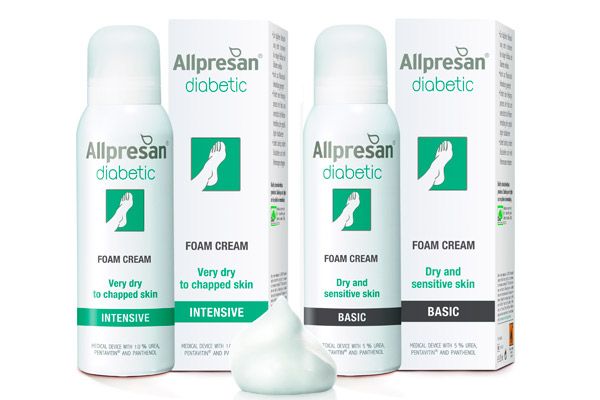
The active ingredients quickly soften the keratinized layer, but do not affect the living one. The product is applied by the application method at a distance of 5-10 cm, holding for 5 minutes.
- Bielita «Foot Care»
Cream against dry calluses, contains the following components: urea, salicylic and glycolic acids, tea tree oil, menthol, camphor and allantoin. Cleanses dry, hard and cracked skin, has an antiseptic, soothing and deodorizing effect.
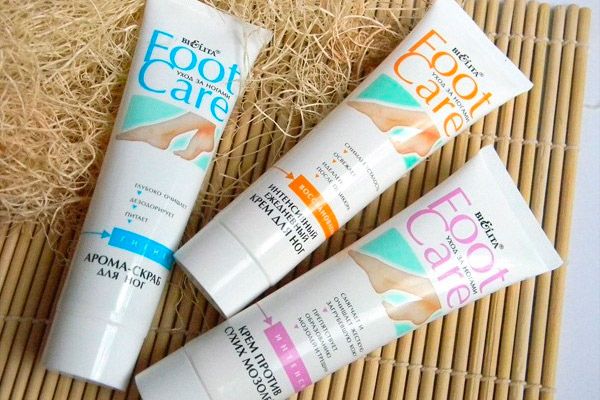
The medicine is carefully applied to dry skin and left until completely absorbed. Apply until calluses disappear completely.
- Floslek «Dr Stopa»
Emollient for rough skin of feet. Softens, prevents formation of calluses and cracks, fungal changes, diaper rash. Normalizes sweating, refreshes and moisturizes. It contains antifungal and antibacterial components, cinnamon oil and chamomile extract.
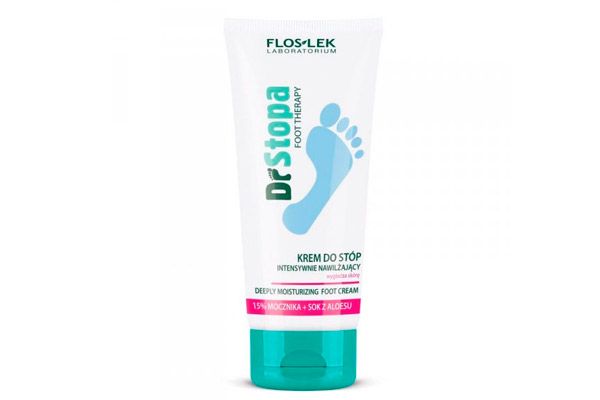
The medicine should be applied with massage movements, 1-2 drops at a time, to problem areas.
- Green Pharmacy
- "Crack Healing" - used to remove dry calluses. Nourishes and softens, has a regenerating effect. Contains sea buckthorn extract, vitamins A, E and allantoin. To achieve a lasting therapeutic effect, put on socks after applying the medicine.
- "Against corns and calluses" - softens and removes keratinized layers of skin. Suitable for excessively dry epidermis prone to corns. It contains: Siberian cedar oil, rosemary and fir oil, aloe. It moisturizes well, tones, soothes, has an antiseptic effect.
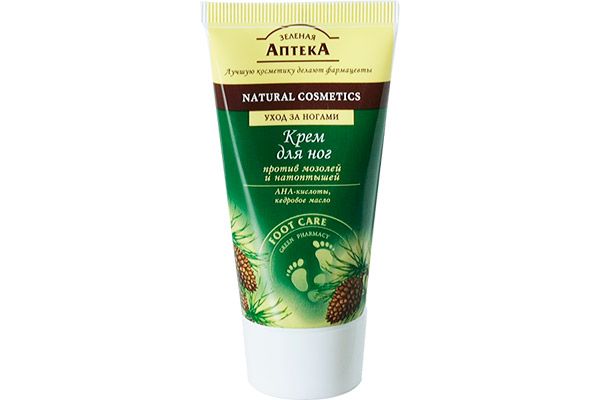
- NUBAR «Callus-Rid T318»
A professional but expensive product. It contains fruit acids (lactic, malic, citric, glycolic), which soften and remove rough areas, as well as seaweed extract, aloe vera and cellulose. Before applying the ointment, problem areas must be soaked or steamed.
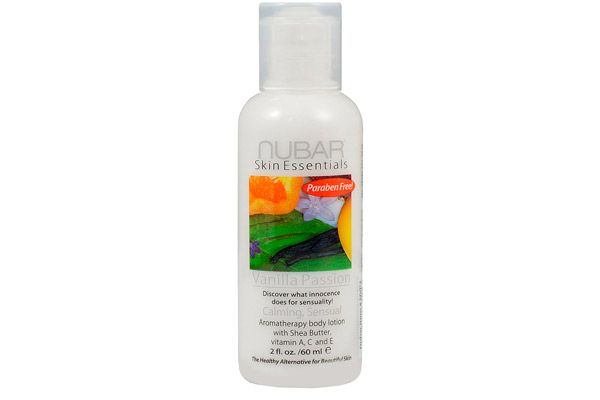
The medicine is applied in a thick layer and wrapped in polyethylene material for 3-5 minutes. After this, it is necessary to remove the remains of the product and moisturize the skin.
- Nature siberica
Cream "Anti-Callus" for foot skin care. Made on the basis of Siberian fir oil, Yakut wood sorrel extract and white beeswax. Softens rough epidermis, heals cracks, intensively nourishes and accelerates regeneration processes.
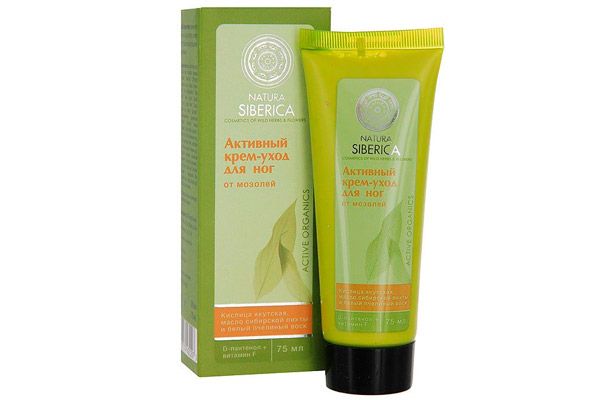
The preparation is applied with massage movements to dry, clean feet. The frequency of use depends on the degree of skin growths.
- Home doctor
Foot cream "For the prevention of corns and calluses" with white willow bark extract and beeswax.

Prevents calluses and the discomfort they cause. Its components have an anti-inflammatory and moisturizing effect. With regular use, the skin becomes smooth and pleasant to the touch.
- Delia Cosmetics «Good Foot»
A cosmetic product for rough and cracked feet. It contains 10% urea, which provides intensive moisturizing.
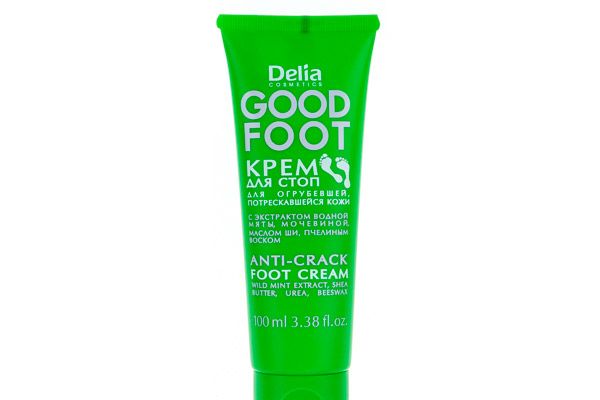
Exfoliates rough skin, refreshes, reduces irritation, normalizes sweating. Can be used several times a day, rubbing in with massage movements.
- "Antimozolin"
Effectively softens and treats corns. It contains the following substances: olive oil, papaya and mint extract, algae, urea, essential oils of tea tree and marjoram, citric acid and other components. Minimizes painful sensations, restores elasticity and structure of rough tissues.

Apply until calluses disappear completely. Not recommended for use in case of intolerance to the components. Long-term use may cause allergic reactions that disappear after discontinuing treatment.
- "Bensalitin"
A combination drug with antiseptic, local irritant and keratolytic action. Due to high accumulation in the stratum corneum, it effectively softens dry skin. The main indication for use is corns and calluses of any severity. Before application, the skin must be steamed and healthy tissue must be covered with a layer of petroleum jelly or adhesive tape. The ointment is applied to the affected area and covered with a plaster. After 2-3 hours, the plaster with the medicine is removed. Contraindicated for use in case of damage to the integrity of the skin and hypersensitivity to active substances. May provoke allergic reactions at the site of application.
- Anti-Corn Cream "5 Days"
It is used to remove corns and dry calluses that occur due to prolonged friction or pressure. It softens the keratinized layer of the skin, making it possible to remove it painlessly. It contains salicylic acid, lanolin and petroleum jelly. The ointment is applied to the wound and covered with a plaster for 12 hours. If necessary, the procedure is repeated. Softened skin is easily removed with pumice. It may cause slight tingling. But if a burning sensation or pain occurs, the cream should be washed off. As a rule, three procedures are enough to completely remove corns.
Cream healer
Foot care is very important, as it helps maintain healthy skin and appearance of the lower extremities, so it should not be relegated to the background. Lekar cream moisturizes and heals cracks, helps in the treatment of corns and dry calluses. Contains natural ingredients: olive oil, urea, natural moisturizer glycerin, vitamin E for cell regeneration, celandine with antimicrobial action, oak bark and tea tree oil. Such a composition indicates the safety and effectiveness of the drug.
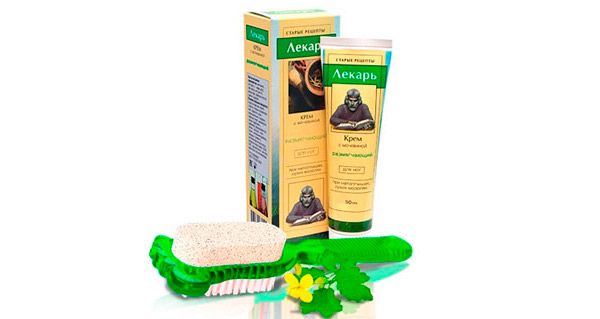
- Indications for use: removal of calluses and corns, healing of cracks. Softens dry skin, relieves heaviness and fatigue, normalizes sweating. Restores normal functioning of cells, destroys microbes and inflammation, prevents the development of infection.
- After application to the affected area, the active components penetrate into the hardened cells, nourishing them with moisture. Due to this, the skin becomes softer and the keratinized areas can be removed. The cream should be applied to clean skin, evenly distributing it over its entire surface using massaging movements. The medicine is used 2-3 times a day until the problem disappears completely.
- The Lekar cream is characterized by instability when interacting with water. This is explained by the release of ammonia and an unpleasant odor. The drug has an alkaline pH, which negatively affects oily skin. Therefore, before using the product, it is better to consult a dermatologist.
Compeed cream
Hardened, rough skin is not only a cosmetic defect, but a problem that causes painful sensations and requires treatment. Compeed cream is an effective drug for eliminating this pathology. Compeed has a number of advantages over similar products:
- Effectively moisturizes the skin, the result is visible after the first use.
- Due to the lactic acid and urea that are part of its composition, calluses and cracks disappear within 4 weeks. And if preventive measures are followed, they do not appear again.
- Minimizes pain and prevents infection from entering the wound.
- Improves the structure of nails and prevents fungal infections on the feet.
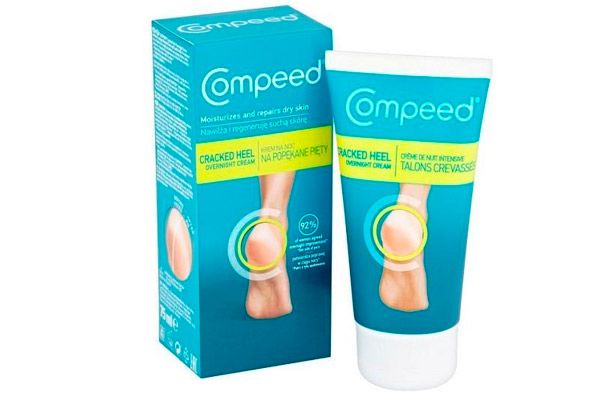
The composition of the drug includes the following substances: lactic acid, urea, glycerin, stearic and palmitic acid, sorbitol, glyceryl stearate and others. Compeed is easy to use. To achieve a lasting therapeutic effect, it must be applied to areas with dry cracked skin and calluses 2 times a day. The product has a non-greasy structure, so before using it, it is recommended to steam the skin and treat it with pumice. Long-term use can cause addiction, which will reduce the effectiveness of the drug.
Keratolytic cream for corns
A new, unique product for exfoliating dead skin cells is a keratolytic cream for calluses. The product nourishes the epidermis and restores water balance. It usually contains urea and salicylic acid. The product may contain lanolin, various herbal extracts, essential oils, acids, petroleum jelly and other components. Together, they have a softening effect.
- Fruit acids and urea optimize skin moisture, increase elasticity, and have an antiseptic effect.
- Natural essential oils – soften and nourish the skin, making it smooth and silky.
- Salicylic acid and plant extracts have a fungicidal and antibacterial effect, preventing fungal diseases.
Popular keratolytic ointments for calluses:
- "Antimozolin" - contains lactic acid and urea. Moisturizes and softens calluses. Helps to get rid of not only rough skin, but also unpleasant odor due to natural components.
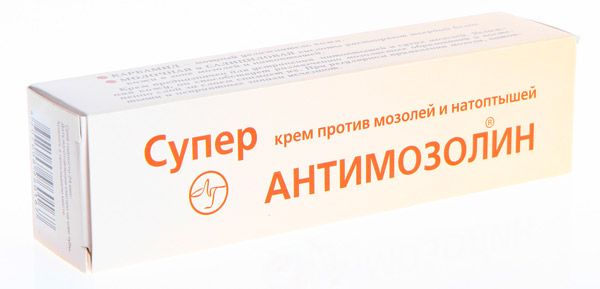
- "TianDe" is a Chinese cosmetic product made from snake fat. It has antibacterial and wound-healing properties. Suitable for dry and wet calluses.
- "Neutrogena" is an expensive but effective product made in Norway with urea as an active ingredient. Reduces the thickness of keratinized skin, preventing the appearance of calluses.
- "Bensalitin" - contains benzoic and salicylic acid. The product is applied to skin seals at intervals of 1-2 hours, sealing healthy skin with a plaster. Helps to eliminate the defect in a short time. When applied to inflamed or damaged skin, it can cause irritation.
- "Namozol-911" is a preparation with plant components (extracts of horsetail, tea tree, fly agaric), disinfects and promotes the exfoliation of corns. Suitable for the treatment of dry and neglected corns, heals cracks.
Keratolytic topical agents should be applied only to the callus site, without affecting healthy tissue or mucous membranes. It is better to carry out the treatment with gloves, but if the cream gets on your hands, wash them thoroughly with soap. The product is carefully distributed over damp, steamed skin and kept for 20-30 minutes. After the remaining ointment has been removed, the callus can be cleaned with a hard brush or pumice stone and washed thoroughly.
Creams for dry calluses
Skin that is deformed and compacted due to mechanical damage requires treatment. The problem is not life-threatening, so it is often not given due attention. But without therapy, the callus begins to bleed, causing pain. As a result, a chronic, that is, dry callus appears, the treatment of which is complex and lengthy.
Most often, the defect occurs due to wearing tight shoes, skin friction when working with tools or regular physical activity. In some cases, the problem is a symptom of other diseases. This may be hypovitaminosis, that is, a lack of vitamin A, diabetes. Very often, fungal diseases, abscesses, warts, tumors and even psoriasis are mistaken for dry calluses. Therefore, before treating it, it is better to consult a specialist to diagnose skin thickening.
Treatment depends on the type of dry callus:
- Soft - has a hard core, but healthy skin around it.
- Hard – appears on smooth skin and epidermis without hair. Most often localized between the fingers.
To eliminate it, special preparations are used. Most often, these are keratolytic creams, which promote rapid and painless exfoliation of the keratinized layer. 10% salicylic ointment, which contains benzoic acid, as well as special baths and lotions, have effective properties. If the disorder is accompanied by a fungal infection, then the help of a dermatologist is mandatory. Since in addition to cream, cryotherapy or laser therapy are used for treatment.
Cream for dry calluses deeply moisturizes the skin, which allows you to get rid of the defect. The main rule is daily procedures until the calluses disappear completely. The principle of removal is simple: the roughened epidermis must be softened with a warm bath, and then apply the medicine, having previously covered healthy tissues.
Popular topical medications for treating dry calluses:
- "Nemozol" - contains keratolytic components (salicylic and glycolic acid), softens and exfoliates the keratinized epidermis. It has antifungal and antiseptic properties, suppresses bacterial infections, and promotes healing. The product is applied under the patch for 1-2 days, after which the callus can be removed with pumice or a coarse brush. To completely eliminate the problem, 3 procedures are enough.
- "Foot Relax" - removes deep and hardened calluses, eliminates painful sensations. Contains salicylic acid and antiseptic components. To achieve a lasting result, the product is applied to the affected area until the problem disappears completely.
- "Stop-Callus" - contains lactic acid, which effectively removes old and dry calluses with a core. Most often used by a doctor.
- "Bensalitin" is a drug with antiseptic, keratolytic and local irritant properties. The active substance is salicylic and benzoic acids. Before using it, healthy tissues are covered with a plaster, and the medicine is applied under the second layer of the plaster. The procedure should last 1-2 hours, after which the product is removed and a moisturizer is applied.
- "Mozoil" is a topical medicine with the active ingredients: salicylic and benzoic acid. It has antimicrobial properties, suppresses the secretion of sweat and sebaceous glands. Low concentrations of the drug have a keratoplastic effect, and high concentrations have a keratolytic effect. The dermatotropic agent softens dry skin, helps in the treatment of corns with a core. It is not used in case of hypersensitivity to the active components and damage to the integrity of the skin at the site of application. The cream is used 1-2 times a day until the keratinized epidermis is completely removed.
 [ 7 ]
[ 7 ]
Pharmacodynamics
Pharmacodynamics of a medicine can tell us how effective it is. When it comes to topical preparations for removing corns, attention is paid to the effectiveness of softening the stratum corneum of the epidermis, the permeability of active substances, the level of absorption and vasoconstriction. Since keratolytic creams are especially popular, let's take a closer look at their pharmacodynamics.
- Salicylic acid has antiseptic and anti-inflammatory properties, softens rough skin and accelerates healing. It has an antibacterial effect, preventing fungal infections.
- Various fruit acids and urea – optimize the moisture of the epidermis and its elasticity. Eliminate unpleasant odor, providing a deodorizing effect.
- Natural oils (soybean, olive, palm) and cosmetic silicones nourish and soften the skin, restore its smoothness, eliminating dryness.
Most often, these components are included in the composition of the preparations. To enhance their effect, before applying the product, it is recommended to make a steaming, massage bath.
Pharmacokinetics
The processes of absorption, distribution and metabolism are pharmacokinetics. It indicates the biochemical processes that occur with the drug after application to local lesions. Keratolytic agents contain salicylic acid, which is quickly absorbed into the deep layers of the skin, moisturizing them. The substance has a local irritant, anti-inflammatory and drying effect. Its increased concentration coagulates microbial proteins, reduces painful sensations and improves trophism.
Natural acids act as a gentle peeling, softening and exfoliating dead skin and disinfecting the wound. Essential oils soften and care for the epidermis. Creams do not penetrate into the systemic bloodstream, as they have low absorption, which can only reach the deep layers of the skin, softening dry calluses with a core.
Dosing and administration
In order for the treatment to be effective, it is very important to follow the rules for using the drug. The method of using the cream for calluses depends on the type and severity of the defect. Let's consider this aspect in more detail:
- Before applying the cream, it is recommended to soften the skin with a warm bath. You can add essential oils, ammonia or sea salt to it.
- The medicine is applied to the steamed, clean skin with massage movements. In order for the epidermis to soften better and calluses to disappear faster, you can put on socks after the procedure.
- If keratolytic creams are used for treatment, they are applied only to damaged surfaces, after covering healthy tissues. A regular plaster with a hole for the callus is suitable for this. The medicine is applied to the wound and covered with a second layer of plaster.
To achieve a lasting therapeutic effect, the procedure should be performed daily. This will remove corns with pumice or a hard brush. Regular long-term therapy is a prerequisite for eliminating dry corns with a core.
Use blister creams during pregnancy
Calluses on the legs or arms are a problem known to everyone. It is especially acute during pregnancy. This is due to the increased load on the female body due to the growing child. The expectant mother suffers from frequent swelling of the legs, which leads to calluses and watery, wet calluses. Without proper attention and treatment, this problem can lead to serious consequences: fungal diseases and various infections.
The use of anti-corn cream during pregnancy is permitted at the first signs of an unpleasant condition. Medicines and cosmetics have low absorption and do not penetrate into the systemic bloodstream, so they are safe for the mother and fetus. In order for the drug to be truly effective, it is better to use it after consulting a dermatologist.
Contraindications
Corn cream and any other medication have contraindications for use. The drug is not used in the following cases:
- Hypersensitivity to active substances
- Infancy of the patient
- Allergic response of the body (itching, burning, redness)
- Violation of the integrity of the skin
If the above-described contraindications are present, drugs of a different form of release or other methods of treatment (cryodestruction, laser therapy) are used to remove keratinized epidermis, but only in agreement with the doctor.
Side effects blister creams
Many cosmetics used to moisturize dry, callused skin can cause side effects. Corn creams provoke the following reactions:
- Burning and tingling
- Skin rashes
- Hyperemia
- Skin itching
Side effects are local, i.e. they appear directly at the site of application. To eliminate them, it is recommended to reduce the frequency of use of the product or stop treatment altogether. The affected skin should be washed with soapy water and a dermatologist should be consulted to select a safe drug.
Overdose
Long-term use of the cream for calluses or exceeding the frequency of its application can provoke a number of unpleasant symptoms. Overdose is similar to side effects. The patient complains of local irritation: itching, burning, redness. To eliminate adverse reactions, you need to stop using the product and, of course, consult a dermatologist.
 [ 19 ]
[ 19 ]
Interactions with other drugs
Treatment of corns should be comprehensive, which means interactions with other drugs. As a rule, creams are combined with special baths and compresses to soften the skin. For this, natural plant extracts, essential oils and other skin-moisturizing components are used.
At the same time, the simultaneous use of several drugs on one wound site is contraindicated. Since this can cause side effects: burning, itching, rash, redness. Keratolytic agents are not recommended for use with sulfonylurea derivatives, hypoglycemic oral medications. This is explained by the fact that salicylic acid increases the permeability of the epidermis, enhancing the absorption of other topical medications.
 [ 20 ]
[ 20 ]
Storage conditions
In order for the treatment to be effective and avoid side effects, it is very important not only to use the drug correctly, but also to observe the storage conditions. Creams for removing corns and keratinized layers of skin should be kept in a place protected from sunlight and inaccessible to children.
Recommended storage temperature is 5°C to 25°C. The medicine must be in its original, tightly sealed packaging. Failure to comply with these rules leads to its deterioration and loss of pharmaceutical properties, which negatively affects the treatment process.
Shelf life
Corn cream is the most affordable, simple, but at the same time effective remedy for eliminating an unpleasant defect. When choosing a drug, you need to pay attention not only to its composition, but also to the expiration date. Storage conditions affect suitability. It is better not to use expired drugs or those with an expiring expiration date.
Attention!
To simplify the perception of information, this instruction for use of the drug "Blister creams" translated and presented in a special form on the basis of the official instructions for medical use of the drug. Before use read the annotation that came directly to medicines.
Description provided for informational purposes and is not a guide to self-healing. The need for this drug, the purpose of the treatment regimen, methods and dose of the drug is determined solely by the attending physician. Self-medication is dangerous for your health.

